A Metal Detectorist in Norway Made the ‘Find of the Century’ After Doctor Tells Him to Get Outside
An amateur metal detectorist in Norway made the “find of the century” after his doctor told him he needed to get outside more.
51-year-old Erlend Bore had childhood dreams of becoming an archaeologist, so when his physiotherapist told him he needed to do anything besides sit on the couch, Bore knew exactly what to do. After securing a metal detector and heading to a remote locale, the hobbyist searched for hours but found only one modern coin. Before leaving, Bore placed himself in the position of an ancient human, thinking where he would trek if he were one of them.
"Then I saw a rock crag, which I would have climbed on if I were to walk from the sea and into the countryside," Bore recounted to local outlet NRK (via Ancient Pages). Bore intended to take a just cursory look, but immediately his detector pinged. He isolated the location and lifted a few layers of earth, but thought he had found some abandoned chocolate candies. Turns out it was actually a cache of Roman-era gold coins and jewelry.
In total, Bore unearthed nine gold pendants with engravings of horses, three rings, and 10 golden pearl beads. The items were transported to the Archaeological Museum at the University of Stavanger. Ole Madsen, director of the museum, remarked that finding "so much gold at the same time is extremely unusual….This is the gold find of the century in Norway.”
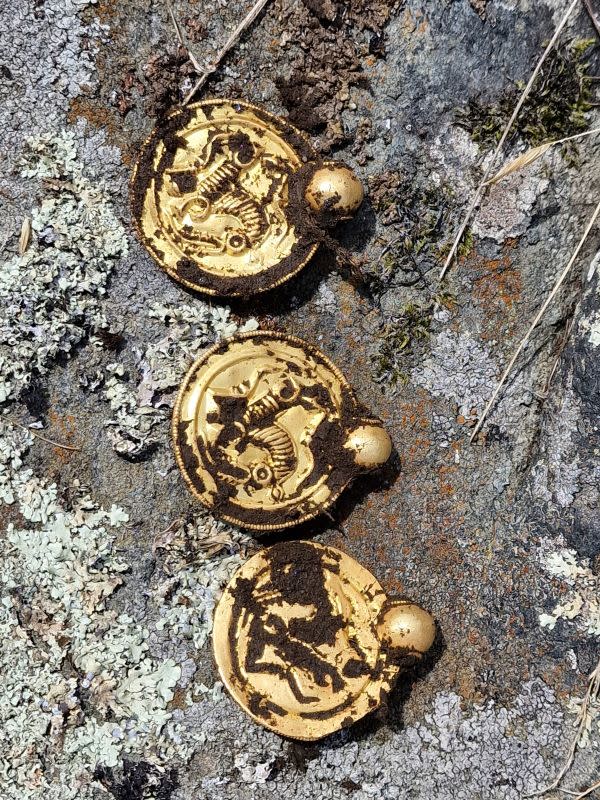
ERLEND BORE/Getty Images
According to Håkon Reiersen, a professor at Stavanger’s university, the pendants date back to 500 A.D., Norway’s Migration Period. He confirmed that the pieces were all part of "a very showy necklace" crafted by skilled jewelers and sported by society’s most powerful. “No similar discovery has been made since the 19th century,” he confirmed.
Reiersen went on to explain the treasure’s possible origins: “In the 6th century, there was a great crisis in Scandinavia. It was climate deterioration and presumably plague which [had] caused large parts of the population to die. Either these are hidden valuables during a troubled period or an offering to the gods.”
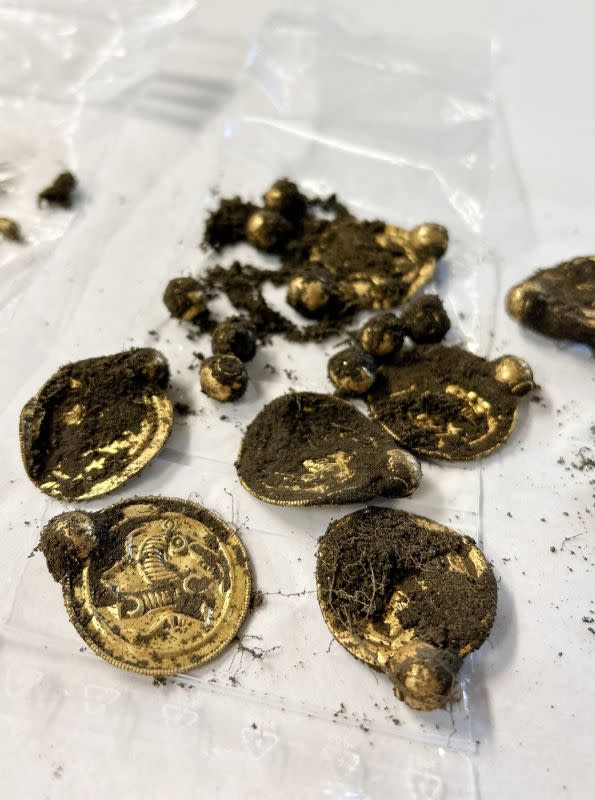
ANNIKEN CELINE BERGER/Getty Images
The Archaeological Museum is hoping to have the artifacts on display as part of a larger exhibition by September 15. Check out more photos below:
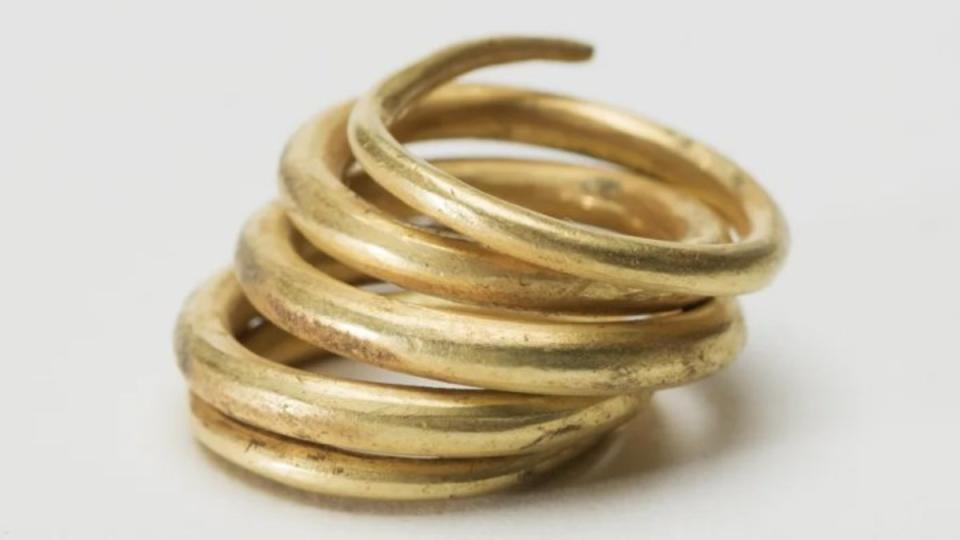
ANNETTE GRÆSLI ØVRELID / ARCHAEOLOGICAL MUSEUM, UIS
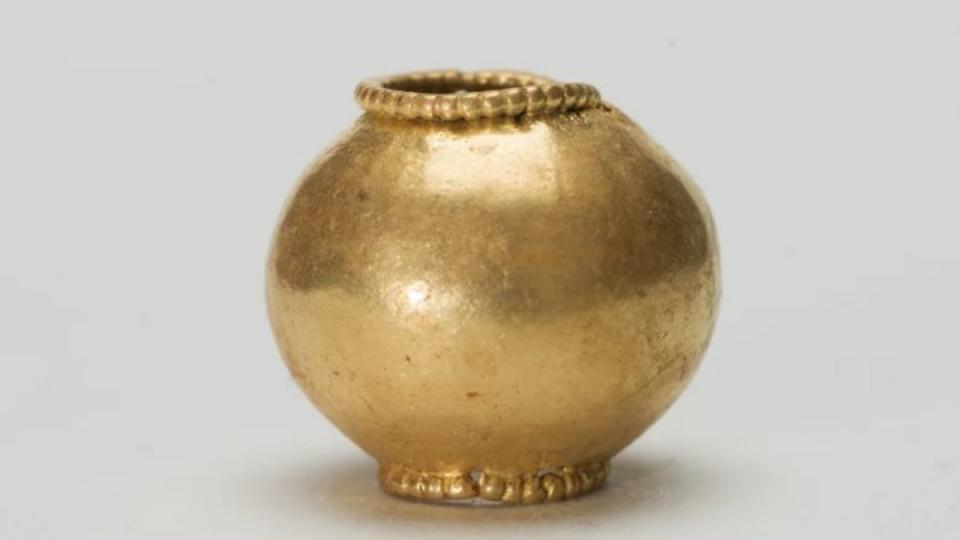
ANNETTE GRÆSLI ØVRELID / ARCHAEOLOGICAL MUSEUM, UIS
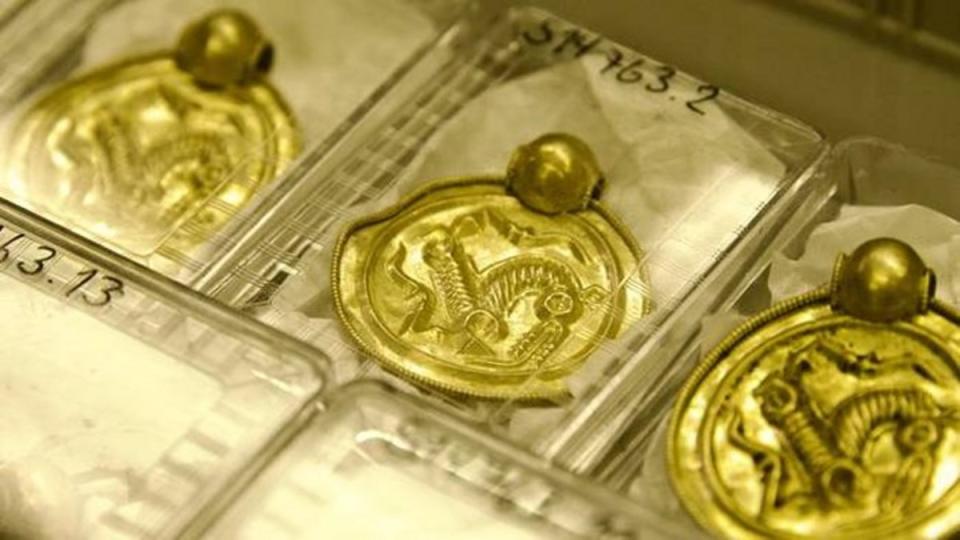
ANNETTE GRÆSLI ØVRELID / ARCHAEOLOGICAL MUSEUM, UIS

